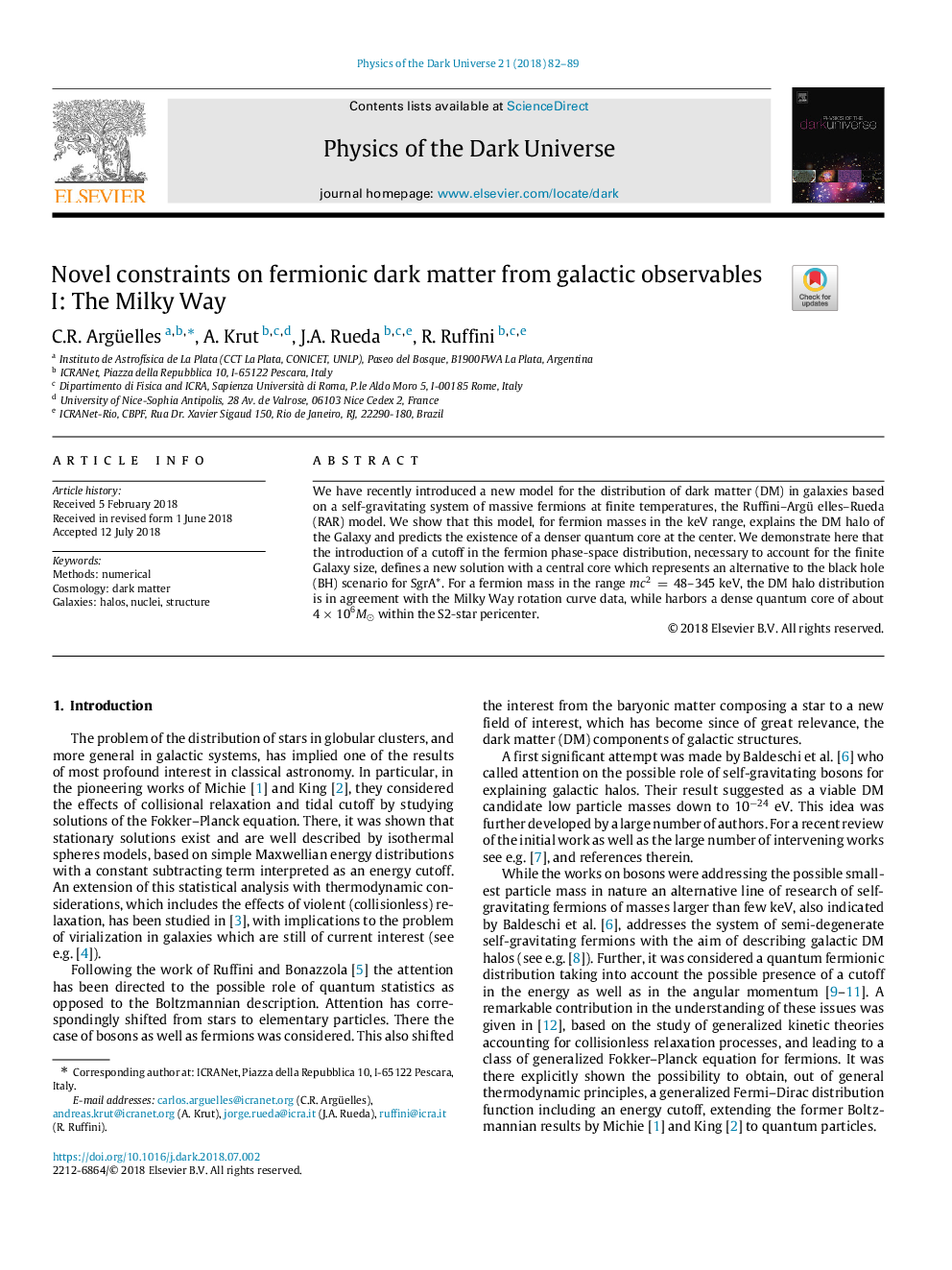| Article ID | Journal | Published Year | Pages | File Type |
|---|---|---|---|---|
| 8141783 | Physics of the Dark Universe | 2018 | 8 Pages |
Abstract
We have recently introduced a new model for the distribution of dark matter (DM) in galaxies based on a self-gravitating system of massive fermions at finite temperatures, the Ruffini-Argüelles-Rueda (RAR) model. We show that this model, for fermion masses in the keV range, explains the DM halo of the Galaxy and predicts the existence of a denser quantum core at the center. We demonstrate here that the introduction of a cutoff in the fermion phase-space distribution, necessary to account for the finite Galaxy size, defines a new solution with a central core which represents an alternative to the black hole (BH) scenario for SgrA*. For a fermion mass in the range mc2=48-345Â keV, the DM halo distribution is in agreement with the Milky Way rotation curve data, while harbors a dense quantum core of about 4Ã106Mâ within the S2-star pericenter.
Related Topics
Physical Sciences and Engineering
Physics and Astronomy
Astronomy and Astrophysics
Authors
C.R. Argüelles, A. Krut, J.A. Rueda, R. Ruffini,
